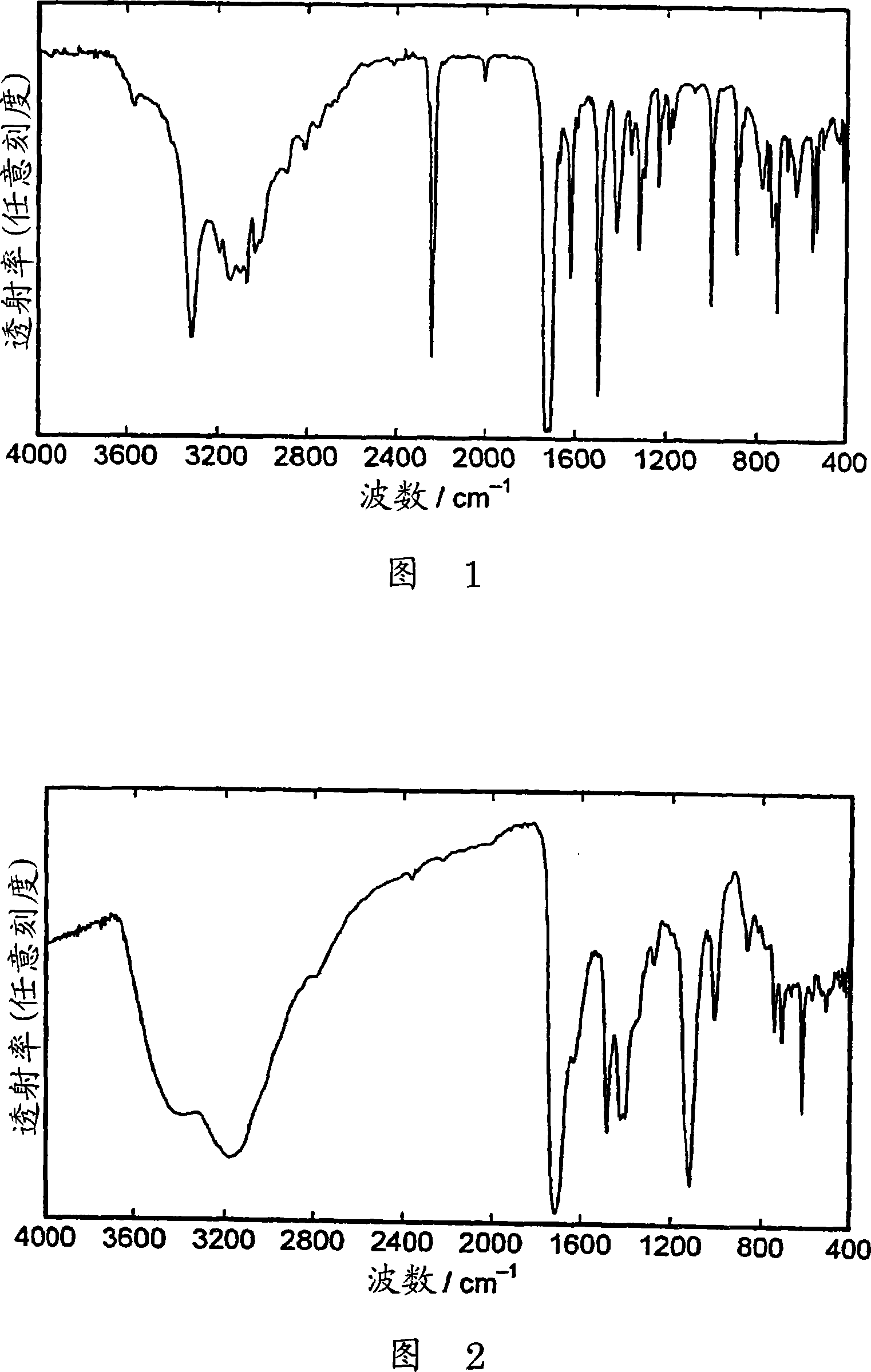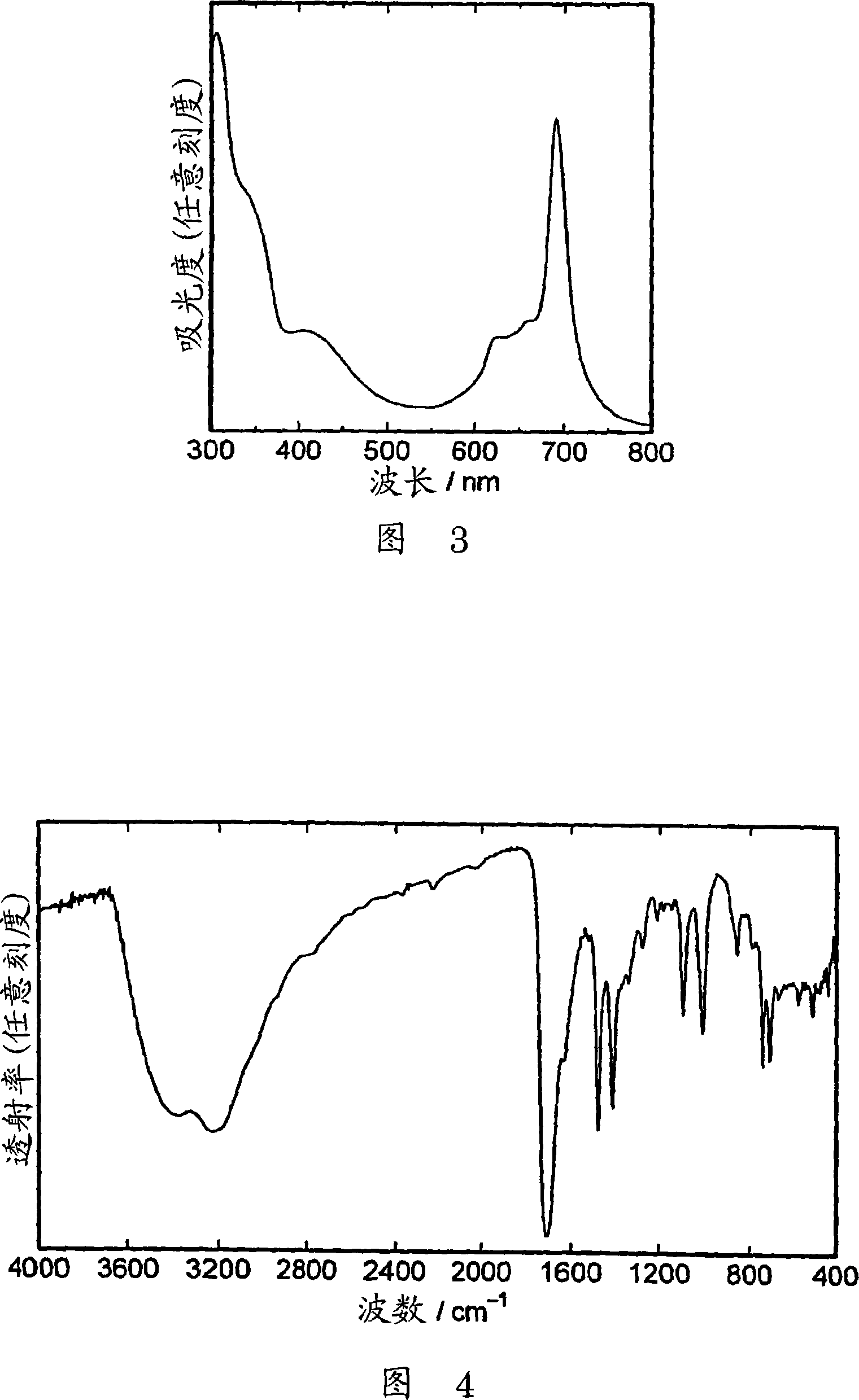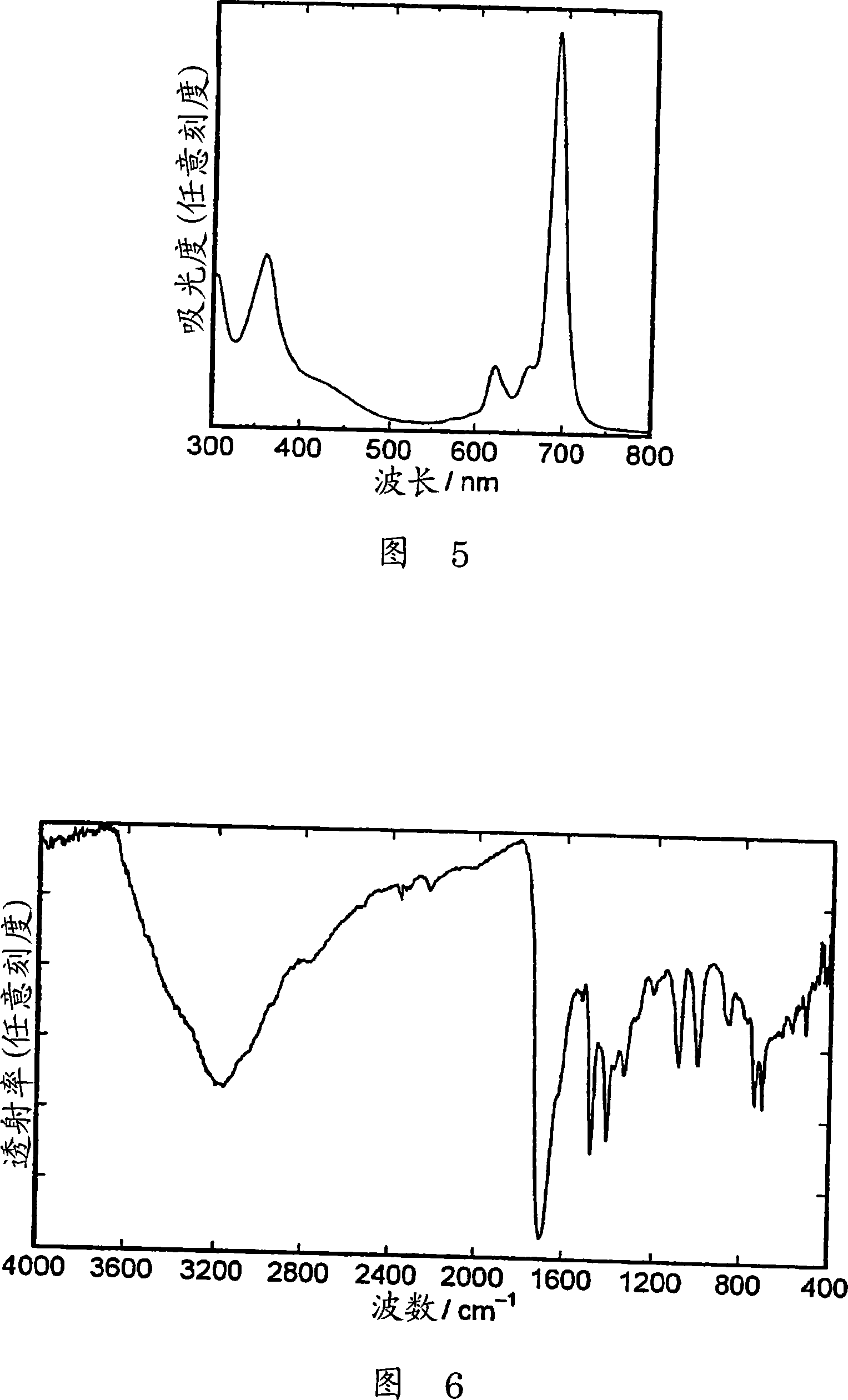Phthalocyanine compound, process for producing the same and colored composition containing the phthalocyanine compound
A technique for coloring compositions and manufacturing methods, applied in chemical instruments and methods, organic dyes, organic chemistry, etc., capable of solving problems such as large color change, insufficient resistance to organic solvents or acids, and achieving low environmental load and safety sex high effect
- Summary
- Abstract
- Description
- Claims
- Application Information
AI Technical Summary
Problems solved by technology
Method used
Image
Examples
Embodiment
[0070] Hereinafter, the present invention will be described in more detail through examples.
Synthetic example 1
[0072] In 100 parts by mass of anhydrous acetonitrile, add 15 parts by mass of 1,2-diamino-4,5-dicyanobenzene and 19.5 parts by mass of 1,1-carbonyldiimidazole, and stir at 70°C for 3 hours to allow the reaction . Then, after cooling the obtained reaction product to room temperature, the precipitated solid was filtered, washed with water, and dried to obtain 16.9 parts by mass (yield 96.5%) of a pink solid.
[0073] For the peach-white solid obtained in Synthesis Example 1, dimethyl sulfoxide (hereinafter, referred to as "DMSO")-d6 solution was carried out 1 H-NMR analysis (using the nuclear magnetic resonance device "JNM-LA300" produced by JEOL Ltd.) and infrared spectroscopic analysis (using the Fourier transform infrared spectrophotometer "FT / IR-550" produced by JASCO Co., Ltd.), the results obtained The following analysis results. In addition, the spectrum obtained by infrared spectroscopic analysis is shown in FIG. 1 .
[0074] 1 H-NMR analysis>
[0075] 1 H-NMR anal...
Synthetic example 2
[0083] (in the foregoing general formula (5), M is a copper atom, R 1 ~R 4 Synthesis of phthalocyanine compounds with hydrogen atoms)
[0084] In 32 parts by mass of trichlorobenzene, add 10 parts by mass of 5,6-dicyanobenzimidazolone obtained in Synthesis Example 1, 1.4 parts by mass of cuprous chloride and 10 parts by mass of DBU, and stir at 180°C for 6 hours make it react. Next, after cooling the obtained reaction product to room temperature, the precipitated solid was filtered. The obtained solid was washed successively with acetone, methanol, 10% by mass of hydrochloric acid, 8% by mass of ammonia water, and water, and dried to obtain 7.3 parts by mass (67.2% yield) of a green solid.
[0085]The green solid obtained above was subjected to FAB / MS analysis (using a mass spectrometer "JMS-LX2000" produced by Japan Electronics Co., Ltd.), and infrared spectroscopic analysis (using a Fourier transform infrared spectrophotometer "FT / IR-550"), and measuring the light absor...
PUM
| Property | Measurement | Unit |
|---|---|---|
| particle diameter | aaaaa | aaaaa |
| particle diameter | aaaaa | aaaaa |
| UV absorption wavelength | aaaaa | aaaaa |
Abstract
Description
Claims
Application Information
 Login to View More
Login to View More - R&D
- Intellectual Property
- Life Sciences
- Materials
- Tech Scout
- Unparalleled Data Quality
- Higher Quality Content
- 60% Fewer Hallucinations
Browse by: Latest US Patents, China's latest patents, Technical Efficacy Thesaurus, Application Domain, Technology Topic, Popular Technical Reports.
© 2025 PatSnap. All rights reserved.Legal|Privacy policy|Modern Slavery Act Transparency Statement|Sitemap|About US| Contact US: help@patsnap.com



